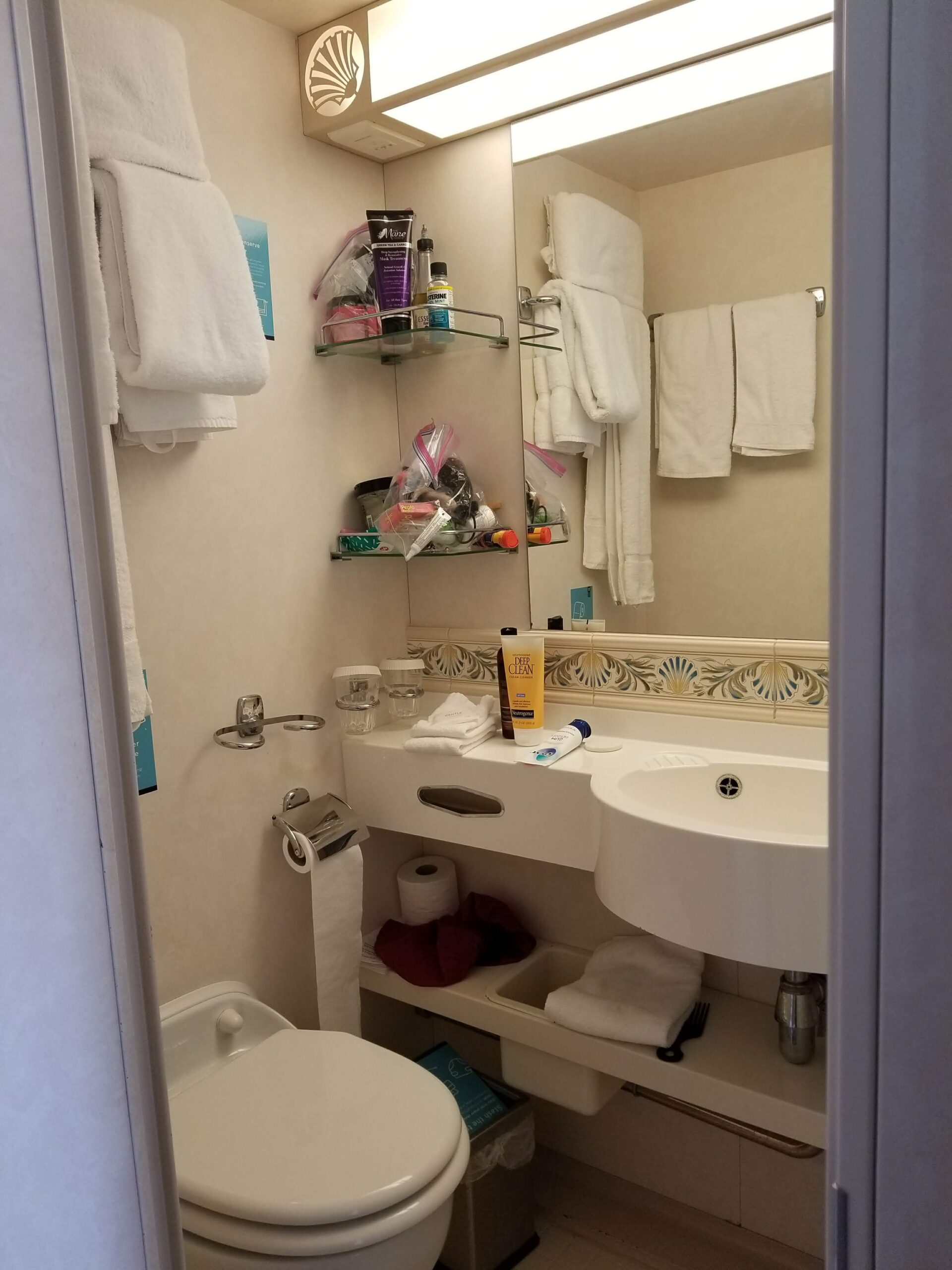Cruises promise families a world of fun and adventure, from buffet extravaganzas to exotic shore excursions. But amidst the magic, there’s a logistical marvel often unnoticed: the management of waste on the high seas.
Specifically, how do cruise ships get rid of human waste? Let’s venture beyond the buffet to explore the systems in place that ensure both our comfort and the ocean’s health.
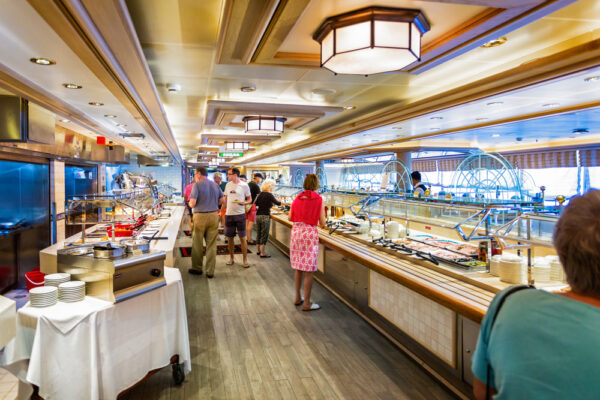
How Do Cruise Ships Get Rid of Human Waste: The Short Answer
Cruise ships deal with “black water,” which is human waste from toilets, clinics, and critter pens. All of this waste is packed with germs and junk, which, if tossed directly into the ocean, can definitely harm its ecosystem. Fortunately, rules and systems are in place to handle this procedure correctly.
Sewage treatment plants are among the systems used before discharging to combat and reduce pathogens and contaminants that blackwater can produce. Human waste collectively gets stored in holding tanks and most often gets disposed of in port facilities.
The Advanced Wastewater Treatment System (AWTS) is the most environmentally friendly procedure – using multiple processing stages to remove all the pollutants. This now “purified wastewater” is then either reused on the ship (not for drinking purposes) or responsibly discharged into the ocean or at a port facility.
But for more details on the fascinating process, read on.
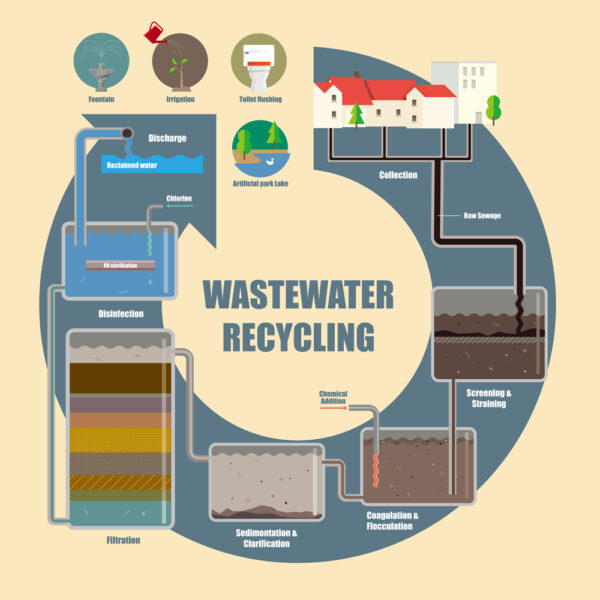
Cruise Ship Wastewater Separation: How Does It Work?
Cruise ships churn out tons of wastewater, and it’s not your regular H2O. Because they house so many passengers and crew, they can generate around 1000 cubic meters of wastewater daily. It mixes toilet material, kitchen muddles, chemicals, and debris from sinks and showers.
So, of course, there are rules categorized for the three types of wastewater:
- Black water – from toilets and kitchens – is often the collection of sewage, food particles, medical waste, and more. Cruise ships handle blackwater with tanks and pumps. They collect it by gravity or vacuum, with strainers to nab any solids. Attached pumps move it to screen presses, separating the gunk from the liquid for treatment.
- Grey water – from sinks and showers – is often a soapy and greasy collection. Cruise ships handle greywater with a hi-tech system. It screens out both the big and tiny debris, then uses bio and chemical approaches to clean it up. The result? Clean greywater that stays within nature’s limits.
- Bilge water – from what collects at the lowest part of the ship’s hull – is often the oily contraption from the ship’s engines, as well as a sludge buildup from seawater and freshwater leaking into the bilge wells. Bilge water on cruise ships goes through these steps:
- Collection: They gather it in the bilge wells, the ship’s basement, where the sides meet.
- Separation: Operators now run it through an Oily Water Separator (OWS), which cleans out oily stuff – some systems also use a triple-filter system.
- Measurement: They check it’s clean – less than 15 parts oil per million parts water.
- Discharge: Only clean water goes into the ocean far from the coast. The rest gets another cleaning round – some cruise ships even go the extra mile with two OWS systems for added environmental safety.
Most cruise ships, though, are incredibly innovative and recycle some wastewater for things like cleaning decks or flushing toilets. It saves on fresh water and helps the planet.
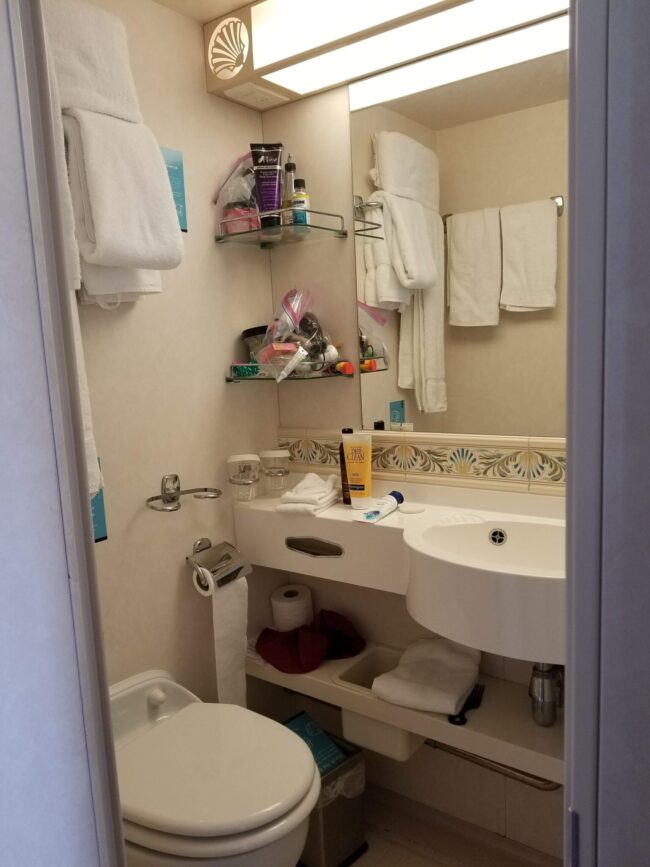
What Do Cruise Ships Do With Sewage?
Sewage, being a mix of wastewater and human waste, comes in either a liquid or solid state. Solid includes paper, plastic, food scraps – the bulky stuff. Liquid is water from sinks, showers, toilets, plus any chemicals.
The critical thing to remember here is that no ship can dump whatever they want, wherever they want. They are subject to criminal penalties if caught doing so. Cruise ships need to follow rules based on where they sail and what sewage they’ve got.
Solid waste gets its own tanks. It’s squeezed down and dried up. Some are burned on board, and some are offloaded for recycling or disposal. Records on how much solid waste is generated, as well as disposed of, is a mandatory requirement by law.
Liquid waste splits into greywater and blackwater groups. Greywater is legally allowed to be disposed of at sea just over three miles from land after it has been treated. Cruise ships handle their black water in two ways: at port or at sea. It’s a choice based on a few things: port facilities, location, rules, and how clean the water is.
- Port action: Some ships like to dock and hand off their black water to the land-based sewage system. It’s greener and follows strict rules in some spots. But not all ports are ready for it, and it can mess with schedules.
- At sea: Others go for ocean disposal, which saves time and money – but only under the correct conditions. If human waste is not treated correctly, it’s a no-go for the environment. Thus, strict rules apply here; maintaining a distance of 3.5 miles from shore according to US laws is one of them. But they all vary depending on the jurisdiction and environmental protection laws.
Who Enforces the Rules?
Several different agencies and departments actively work to monitor and enforce the rules regarding handling wastewater. These include the U.S. Coast Guard, the Environmental Protection Agency (EPA), and the Department of Justice.
Here are some notable examples of rules enforcement at work:
- Holland America Line Operating Company Agrees to Plead Guilty to Illegal Discharge of 20,000 Gallons of Untreated Sewage into Juneau Harbor (December 2004)
- Princess Cruise Lines to Pay $40 Million Fine for Illegal Dumping (December 2016)
- Carnival Cruises to Pay $20 Million in Pollution and Cover-Up Case (June 2019)
- Holland America fined $17K over greywater dumping in Glacier Bay (September 2019)
Black Water Treatment On Cruise Ships
Black water treatment on cruise ships is all about cleaning up sewage before it hits the ocean. Different ships use different sewage treatment plants (STPs) based on their size and design.
- Marine Sanitation Devices (MSDs): Old-school STPs that grind waste, disinfect with chlorine, and remove excess chlorine before releasing it – not excellent at reducing organic matter and may create nasty by-products.
- Membrane Bioreactors (MBRs): Advanced STPs that use biology and membranes to clean. Bacteria break down waste, membranes filter out the gunk, and UV light or ozone sterilizes it, producing top-notch clean water.
- Advanced Wastewater Treatment Systems (AWTS): The eco-champion of STPs. It has stages for separating solids, breaking down waste, removing contaminants, and recycling water for non-drinking purposes – saving up to 80% of water and reducing waste.
Behind the Scenes: Cruise Ship Kitchen Operations
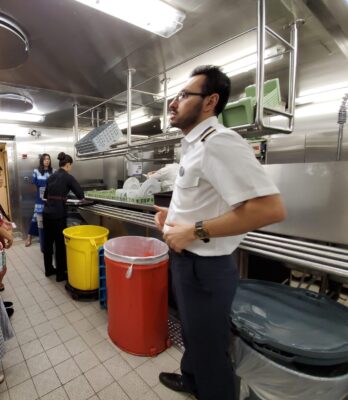
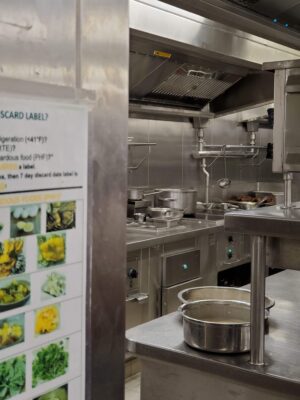

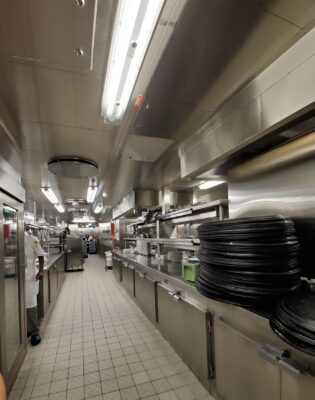
Understanding Advanced Wastewater Treatment On Cruise Ships
Cruise ships confront the challenge of wastewater, a complex mix of organic and inorganic contaminants that, if released untreated, can harm the marine environment and public health. To address this, vessels are equipped with sophisticated Advanced Wastewater Treatment Systems (AWTS) capable of purifying wastewater before it’s discharged into the sea.
AWTS represents a multi-faceted approach, leveraging biological, physical, and chemical processes for onboard wastewater treatment. The choice of AWTS type—whether membrane bioreactors, activated sludge systems, or reverse osmosis systems—depends on the vessel’s design and capacity. Nevertheless, all systems share common stages, including:
- Pre-treatment: This phase encompasses the removal of large solids, such as paper, plastic, and food scraps, through processes like screening, grinding, and filtering. These actions prevent potential clogging and damage to downstream treatment equipment.
- Biological treatment: Microorganisms like bacteria and fungi are employed to decompose organic matter and nutrients present in wastewater. These microorganisms metabolize organic material into carbon dioxide, water, and biomass. The biomass is subsequently separated from the treated water through sedimentation or filtration.
- Disinfection: Chlorination or ultraviolet radiation is applied to eliminate any remaining pathogens like bacteria and viruses within the treated water, ensuring its safety for discharge or reuse onboard.
- Post-treatment: This stage involves adjustments to the water’s pH, removal of excess chlorine, or the addition of chemicals to enhance the quality of the treated water, aligning it with international standards and regulations governing discharge or reuse onboard.
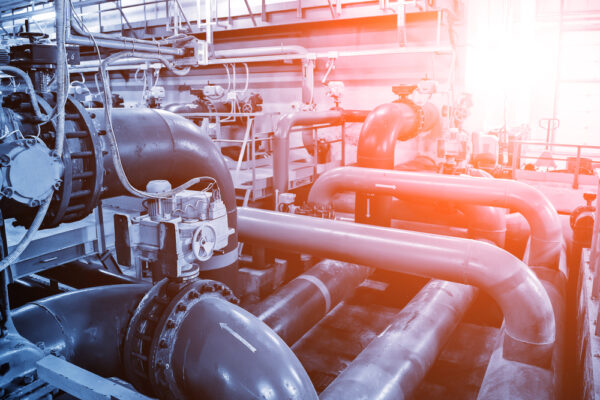
AWTS is engineered to produce effluent cleaner than what’s typically found in municipal wastewater treatment plants on land. Notably, the Cruise Lines International Association (CLIA) reports that 99% of new ships on order are equipped with AWTS, bringing the global capacity to 78.5%. Presently, 70% of the CLIA’s oceangoing cruise line fleet capacity relies on AWTS, marking a 5% increase over 2019.
The implementation of AWTS underscores the cruise industry’s dedication to environmental responsibility and innovation, minimizing its impact on marine ecosystems and safeguarding human health while providing an exceptional experience for passengers and crew members.
Do Cruise Ships Reuse Waste Water?
Cruise ships, those colossal floating cities, are thirsty for water. They use it for everything, but they can’t tap into pipes like on land. They either make their own from seawater or store it. And they’ve got to deal with the water mess left behind by passengers and crew.
Cruise ships work some water magic to stay in the good books of environmental regulations and be savvy with resources. They treat the water based on what it is.
Greywater gets cleaned up with physical and biological methods. Then, it’s used for things like flushing toilets or washing decks. Some high-tech ships take it further, making it safe to drink.
Black water needs a more complex treatment involving disinfection, nutrient removal, and sludge management. After that, it might find a new life for non-drinking uses like cooling the engine or getting released into the sea under strict rules.
And it’s not just about cleaning up. Cruise ships are water-saving champs. They use low-flow and air-powered faucets and teach passengers and crew to be water-wise. Every drop counts, and they even collect rainwater and AC condensation.
Treating and reusing water isn’t just about being responsible; it’s also a smart financial move and a nod to environmental stewardship.
How Cruise Ships Follow Environmental Standards
Cruise ships operate within a healthy framework of environmental strategies – demonstrating their dedication to environmental responsibility. Oversight from the major leagues like the International Maritime Organization (IMO), the US Environmental Protection Agency (EPA), and the European Union (EU) brings compliance to both national and international environmental laws.
For environmental sustainability, the pursuit starts with cruise ships committing to reducing global carbon emissions – aiming to achieve the IMO’s zero-emission target. They employ advanced tech and practices to boost fuel efficiency and reduce greenhouse gas emissions simultaneously – a must for the cruise industry.
These include next-gen air quality systems and propulsion systems applying liquefied natural gas (LNG) as the main focus. Still, more innovative moves towards the change include shore power connections, optimized hull designs, speed management, and energy conservation measures.
Operating in ecologically sensitive areas, like the Norwegian World Heritage Fjords, requires strict adherence to environmental regulations. Cruise ships must meet specific criteria regarding fuel sulfur content, nitrogen oxide emissions, water discharge from scrubbers, incinerators, black and grey water treatment, and anti-vapor plume devices.
More than just a fancy voyage – they tackle serious stuff too – waste control, clean ballast water, noise reduction, marine life care, and even educational programs. No ordinary gig!
Cruise lines adhere to industry best practices and standards as part of their ongoing commitment to reduce their environmental footprint and act as responsible ocean stewards.

